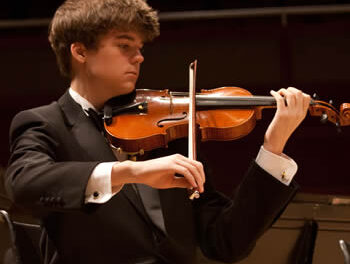How would you mark the passing of 150 years since the birth of the great French composer Claude Debussy (1862-1918)? You might begin by simply mounting a Sesquicentennial Tribute to the composer. And that’s exactly how Meredith College approached the matter. The setting was Carswell Concert Hall on the campus, featuring six Meredith faculty members, assisted by two guest musicians. This program, indeed the entire weekend-long Debussy Festival, was dedicated to the memory of James L. Clyburn (1932-2012), Meredith’s revered and renowned Professor Emeritus. He joined the faculty in 1958 and retired as professor of music after 42 years of service.
Augmenting the evening’s four Debussy works were a couple of altogether appropriate complementary pieces. Pianist and composer Tom L. Lohr played “Improvisation” from his set of Tributes. This mid-program number was in fact genuinely “Debussy-esque” and most fitting, given Lohr’s report that Clyburn had actually influenced its composition. Then there was a Chopin encore by cellist Virginia Hudson Ewing and pianist Kent Lyman. In a final moving reference to Clyburn, they played the sublime Andante movement from Chopin’s Sonata in G minor for Cello and Piano.
Providing a stylish start to the evening was the Sonata No. 3 for violin and piano. Featured here were the graceful violin of Carol Chung and the masterly piano of Frank Pittman, the rightly celebrated Meredith veteran and freelancer.
DeMar Neal brought a vibrant baritone to the set of three songs, Trois Mélodies de Verlaine. In these lesser-known pieces he was ably assisted by Elon University pianist, Katherine Thomas. With the second song, “The sound of the horn,” the performers reached the proper balance of piano and voice. The two were in excellent harmony and dramatic form with “…an agony that seems somehow soothing / And gives simultaneous delight and distress.”
Margaret Evans and the aforementioned Kent Lyman collaborated with praiseworthy precision in the “big” work of the evening, En Blanc et Noir (In Black and White) for two pianos and four hands. The three-movement work was by turns violent and somber. The second and most substantial of the movements quoted at some length from the German Ein feste Burg, but the claimed quotations from the French La Marseillaise were subtle and as the program notes indicated, quite “oblique.”
The last movement of the closing Sonata No. 1 in D Minor for cello and piano was labeled Léger et nerveux (Light and nervous). But all of the movements called on the striking skills of cellist Virginia Ewing Hudson, with again the strong accompaniment of Lyman. They played this towering work with the synchronism one might expect only from a longtime duo. The sonata is reputed to make “unnatural” demands on the cello. It also demanded (and received) the highest order of musicianship from these performers.
With the requisite imagination, one could discern the shade of Debussy moving about that recital hall. He had ample reason to be pleased.











